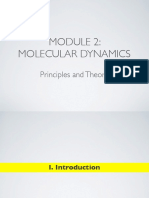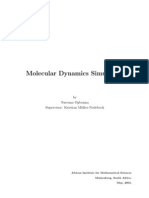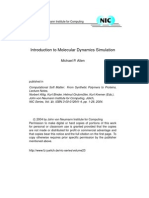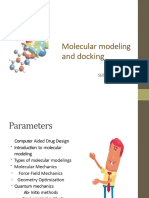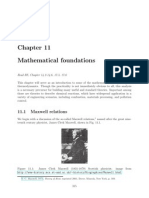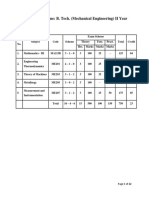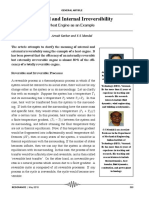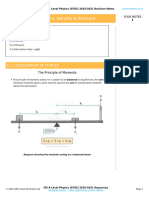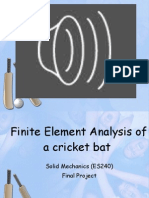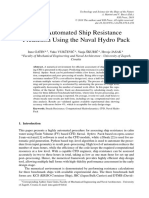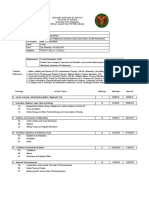0% found this document useful (0 votes)
44 views50 pagesLAMMPS Tutorial SC22
The document provides an introduction to LAMMPS, a large-scale molecular dynamics simulator developed by Stan Moore at Sandia National Laboratories. It covers the fundamentals of molecular dynamics, the capabilities of LAMMPS, and various computational techniques used for simulating atomic and molecular systems. Additionally, it discusses the importance of statistical mechanics, interatomic potentials, and the various packages available for optimizing performance on different hardware architectures.
Uploaded by
lookyoursoulCopyright
© © All Rights Reserved
We take content rights seriously. If you suspect this is your content, claim it here.
Available Formats
Download as PDF, TXT or read online on Scribd
0% found this document useful (0 votes)
44 views50 pagesLAMMPS Tutorial SC22
The document provides an introduction to LAMMPS, a large-scale molecular dynamics simulator developed by Stan Moore at Sandia National Laboratories. It covers the fundamentals of molecular dynamics, the capabilities of LAMMPS, and various computational techniques used for simulating atomic and molecular systems. Additionally, it discusses the importance of statistical mechanics, interatomic potentials, and the various packages available for optimizing performance on different hardware architectures.
Uploaded by
lookyoursoulCopyright
© © All Rights Reserved
We take content rights seriously. If you suspect this is your content, claim it here.
Available Formats
Download as PDF, TXT or read online on Scribd
/ 50









